Related Research Articles

Kannada, formerly also known as Canarese, is a Dravidian language spoken predominantly by the people of Karnataka in southwestern India, with minorities in all neighbouring states. It has around 44 million native speakers, and is additionally a second or third language for around 15 million non-native speakers in Karnataka.
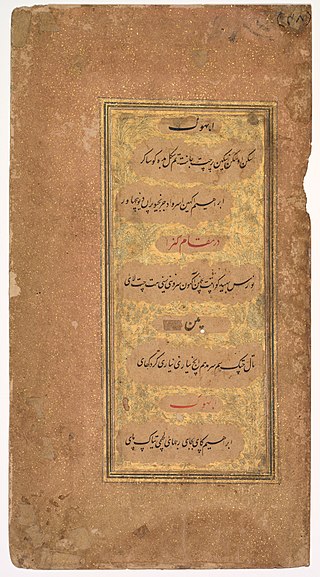
Deccani is an Indo-Aryan language spoken in the Deccan region of south-central India and the native language of the Deccani people. The historical form of Deccani sparked the development of Urdu literature during the late-Mughal period. Deccani arose as a lingua franca under the Delhi and Bahmani Sultanates, as trade and migration from the north introduced Hindavi to southern India. It later developed a literary tradition under the patronage of the Deccan Sultanates. Deccani itself came to influence Hindustani, on which Urdu and Hindi are based.
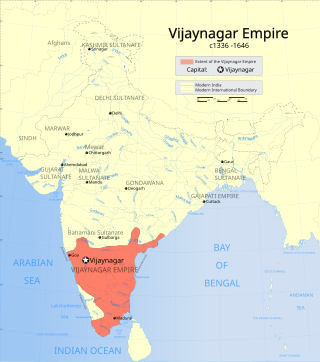
The Vijayanagara Empire was a medieval Hindu empire that ruled much of southern India. It was established in 1336 by the brothers Harihara I and Bukka Raya I of the Sangama dynasty, members of a pastoralist cowherd community that claimed Yadava lineage.
The Deccan sultanates were five late-medieval Indian kingdoms—on the Deccan Plateau between the Krishna River and the Vindhya Range—that were created from the disintegration of the Bahmani Sultanate and ruled by Muslim dynasties: namely Ahmadnagar, Berar, Bidar, Bijapur, and Golconda. The sultanates had become independent during the break-up of the Bahmani Sultanate. The five sultanates owed their existence to the declaration of independence of Ahmadnagar in 1490, followed by Bijapur and Berar in the same year. Golconda became independent in 1518, and Bidar in 1528.
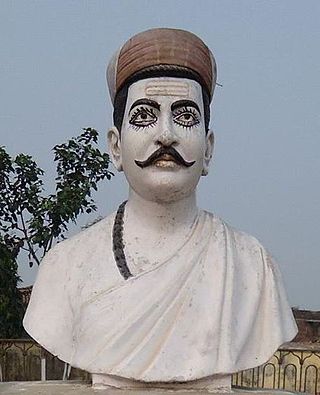
Vidyapati, also known by the sobriquet Maithil Kavi Kokil, was a Maithili and Sanskrit polymath-poet-saint, playwright, composer, biographer, philosopher, law-theorist, writer, courtier and royal priest. He was a devotee of Shiva, but also wrote love songs and devotional Vaishnava songs. He had knowledge of, and composed works in Sanskrit, Prakrit, Apabhramsha and Maithili.

Shahaji Bhosale was a 17th century Indian military leader who served the Ahmadnagar Sultanate, the Bijapur Sultanate, and the Mughal Empire at various points in his career. As a member of the Bhonsle dynasty, Shahaji inherited the Pune and Supe jagirs (fiefs) from his father Maloji, who previously served the Ahmadnagar Sultanate. During the Mughal invasion of the Deccan, Shahaji joined the Mughal forces and served under Emperor Shah Jahan for a short period. After being deprived of his jagirs, he defected to the Bijapur Sultanate in 1632 and regained control over Pune and Supe. In 1638, he received the jagir of Bangalore after Bijapur's invasion of Kempe Gowda III's territories. Afterwards, he became the chief general of Bijapur and oversaw its expansion.

Indian painting has a very long tradition and history in Indian art. The earliest Indian paintings were the rock paintings of prehistoric times, such as the petroglyphs found in places like the Bhimbetka rock shelters. Some of the Stone Age rock paintings found among the Bhimbetka rock shelters are approximately 10,000 years old. Because of the climatic conditions in the Indian subcontinent, very few early examples survive today.

Saharsa is one of the thirty-eight districts of Bihar, India. Saharsa city is the administrative headquarters of this district. Saharsa district is a part of the Kosi Division and it became a district on 1 April 1954 and has subsequently become smaller with other districts being carved from it, most notably Madhepura in 1981.
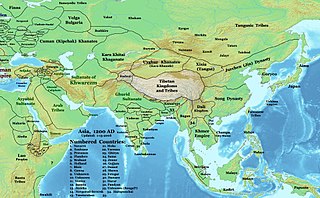
Hoysala literature is the large body of literature in the Kannada and Sanskrit languages produced by the Hoysala Empire (1025–1343) in what is now southern India. The empire was established by Nripa Kama II, came into political prominence during the rule of King Vishnuvardhana (1108–1152), and declined gradually after its defeat by the Khalji dynasty invaders in 1311.
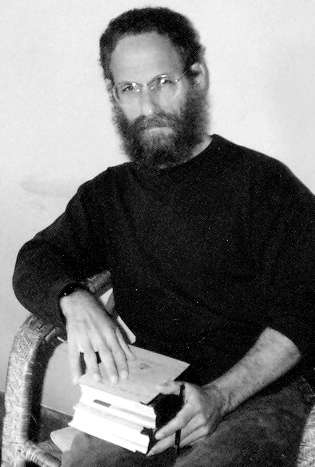
Sheldon I. Pollock is an American scholar of Sanskrit, the intellectual and literary history of India, and comparative intellectual history. He is the Arvind Raghunathan Professor of South Asian Studies at Columbia University. He was the general editor of the Clay Sanskrit Library and the founding editor of the Murty Classical Library of India.
Viśvanātha Kavirāja, most widely known for his masterpiece in aesthetics, Sāhityadarpaṇa, was a prolific poet, scholar, and rhetorician who ascended literary heights during the reigns of two successive Eastern Ganga rulers of Kalinga (India) – King Narasimha Deva IV and King Nishanka Bhanudeva IV. In absence of availability of exact dates of his birth and date, the periods of their rules is assumed to be the time of Viswanatha.
The political history of medieval Karnataka spans the 4th to the 16th centuries in Karnataka region of India. The medieval era spans several periods of time from the earliest native kingdoms and imperialism; the successful domination of the Gangetic plains in northern India and rivalry with the empires of Tamilakam over the Vengi region; and the domination of the southern Deccan and consolidation against Muslim invasion. The origins of the rise of the Karnataka region as an independent power date back to the fourth-century birth of the Kadamba Dynasty of Banavasi which was the earliest of the native rulers to conduct administration in the native language of Kannada in addition to the official Sanskrit.
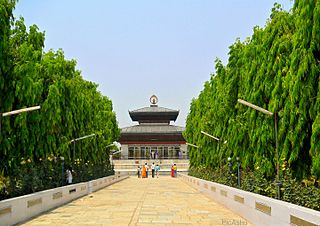
Mithila, also known as Tirhut, Tirabhukti and Mithilanchal is a geographical and cultural region of the Indian subcontinent bounded by the Mahananda River in the east, the Ganges in the south, the Gandaki River in the west and by the foothills of the Himalayas in the north. It comprises certain parts of Bihar and Jharkhand of India and adjoining districts of the Koshi Province, Bagmati Pradesh and Madhesh Province of Nepal. The native language in Mithila is Maithili, and its speakers are referred to as Maithils.
Mithila is a geographical and cultural region located in the Indian subcontinent. The native language is known as Maithili and its speakers are referred to as Maithils. The majority of the Mithila region falls within modern-day India, more specifically in the state of Bihar. Mithila is bounded in the north by the Himalayas, and in the south, west and east by the Ganges, Gandaki and Mahananda respectively. It extends into the southeastern Terai of Nepal. This region was also called Tirabhukti, the ancient name of Tirhut.
Kēśirāja, also spelled Keshiraja, was a 13th-century Kannada grammarian, poet and writer. He is particularly known for authoring Shabdamanidarpana, an authoritative work on Kannada grammar. According to Dravidian scholar Sheldon Pollock, because of this work he is considered the "greatest theorist of Kannada grammar". He was also a scholar in Sanskrit as well and a court poet in the Hoysala Court.
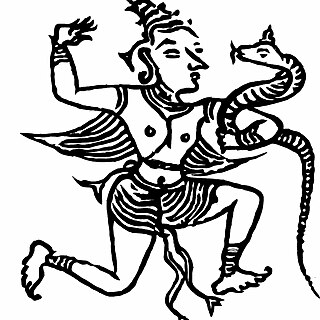
The Paramara dynasty was the ruling dynasty of Kingdom of Malwa in west-central India between 9th and 14th centuries. They belonged to the Parmara clan of the Rajputs.

The Sultanate of Ahmednagar or the Nizam Shahi Sultanate was a late medieval Indian Muslim kingdom located in the northwestern Deccan, between the sultanates of Gujarat and Bijapur, ruled by the Nizam Shahi or Bahri dynasty. It was established when Malik Ahmed, the Bahmani governor of Junnar after defeating the Bahmani army led by general Jahangir Khan on 28 May 1490 declared independence and established the Nizam Shahi dynasty of the Sultanate of Ahmednagar.

Before British colonisation, the Persian language was the lingua franca of the Indian subcontinent and a widely used official language in North India. The language was brought into South Asia by various Turkics and Afghans and was preserved and patronized by Local Indian dynasties from the 11th century onwards, notable of which were the Ghaznavids, Sayyid Dynasty, Tughlaq dynasty, Khilji dynasty, Mughal Dynasty, Gujarat Sultanate, Bengal sultanate etc. Initially it was used by Muslim dynasties of India but later started being used by Non-Muslim empires too, For example the Sikh empire, Persian held official status in the court and the administration within these empires. It largely replaced Sanskrit as the language of politics, literature, education, and social status in the subcontinent.
Mithila may refer to:

Sringara Prakasa is a voluminous set of Sanskrit poetry consisting of thirty-six chapters, documented in 1908. It deals mostly with Alamkara-Shastra (rhetoric) and rasa, and is claimed to have been authored by Raja Bhoja, the king of Paramara dynasty in the early 11th century. A large extent of this magnum opus is dedicated to Sringara Rasa, which according to Bhoja's theory: "is the only one Rasa admissible."
References
- 1 2 3 4 5 6 7 8 Pollock, Sheldon (2009). "Bouquet of Rasa" & "River of Rasa". NYU Press. pp. xx–xxi. ISBN 9780814767559.
- ↑ Saṅgīt, Mahābhāratī (2011). Bhānudatta Misra. ISBN 978-0-19-565098-3.
{{cite book}}:|journal=ignored (help) - ↑ Tripathi, Ramasuresa (1981). Rasa-mañjarī of Bhānudatta: with two unpublished commentaries Parimala of Śeṣa-Cintāmaṇi & Rasāmoda of Trivikrama Miśra. Viveka Publications. p. 42.